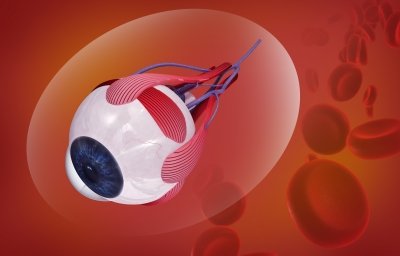In a 2017 study, researchers tested the efficacy of CAD-31 in a mouse model of Alzheimer’s disease. The findings suggest CAD-31 is a promising candidate for the treatment of Alzheimer’s disease, restoring Alzheimer’s-related declines in spatial memory, anxiety responses, and associative learning to normal levels.
Though progress has been made regarding the treatment of Alzheimer’s disease, at present there are no drugs available which prevent the death of brain cells in Alzheimer’s patients. Two candidate drugs, J147 and its derivative CAD-31, have shown promise regarding the prevention of Alzheimer’s in rodents and the promotion of brain cell health in cell cultures. J147 has furthermore been shown to restore cognitive declines and some Alzheimer’s symptoms in older rats. More research will be required, however, to determine if CAD-31 is similarly effective for Alzheimer’s treatment in rodents and eventually in humans.
In a recent study published in Alzheimer’s Research & Therapy, researchers investigated the effect of CAD-31 on Alzheimer’s Disease-associated impairments. Ten-month-old female mice engineered to display AD-like symptoms and age-matched controls were fed diets with or without 10 mg/kg/day of CAD-31 for 3 months. The groups were designated control, control+31, AD (Alzheimer’s disease), and AD+31. Cognitive function – particularly spatial memory, anxiety, and associative learning – was then tested. The mice were euthanized afterwards, and blood and brain tissue samples were then collected.
Spatial memory was tested using a 2-day water maze, in which mice were to navigate to a platform within 180 seconds using coloured shapes on the walls around the pool. On day 1 (training day), 4 trials were conducted in which mice were to swim to a visually-marked platform. On day 2 (testing day), the platform was unmarked.The extra time taken to find the platform on day 2 was similar for control, control+31, and AD+31 mice, but was considerably greater for AD mice, suggesting CAD-31 is able to rescue AD-related declines in spatial memory.
Mice tend to be afraid of heights and prefer dark spaces. AD mice, however, tend to be less anxious than normal mice.As such, an elevated plus-shaped maze with 2 bright, open arms and 2 walled arms was used to assess anxiety response.Mice were placed in the centre of the maze for 2 minutes to become familiarized. They were then allowed to move freely between the open and walled arms for 5 minutes and the time spent in the closed vs. open arms was recorded.The times spent in the open arms were similarly low for control, control+31, and AD+31 mice, but significantly greater for AD mice, suggesting CAD-31 is able to restore a normal anxiety response in these mice.
Associative learning was assessed using a 2-day fear conditioning test, in which the objective was to associate time spent in a chamber with a painful sensation, denoted by freezing in place. On day 1, mice were allowed to explore the chamber for 2 minutes. A 30-second tone was then played, followed by a shock to the foot. The tone and shock were repeated once before the mice were again allowed to explore the chamber for 2 minutes and were then removed. On day 2, mice spent the same amount of time in the chamber as in the previous day, though without exposure to the tone or shock. The time spent frozen in place was recorded.Control, control+31, and AD+31 mice spent similar amounts of time frozen in place. The time spent by AD mice was significantly lower, suggesting CAD-31 is able to rescue Alzheimer’s-related associative learning deficits.
To compare the efficacy of CAD-31 against J147, cell cultures representative of age and Alzheimer’s-related declines in brain function were exposed to various doses of the 2 compounds. Potency was assessed with respect to half the concentration required to achieve peak viability in a given cell culture (EC50).The EC50s of J147 and CAD-31 were 35nM and 18nM respectively for cortical cell cultures, representative of age-related declines in brain cell growth and metabolic factors. The EC50s were 74nM and 95nM for BDNF receptor-positive HT22 cells, representative of the age and Alzheimer’s-related declines in levels of the memory-protecting molecule BDNF in the brain. The EC50s were 6nM and 20nM for cortical cells deficient in the antioxidant GSH, which causes programmed cell death such as is seen with aged brain cells. The EC50s were 14nM and 47nM for oxygen-starved HT22 cells. The EC50s were 15nM and 27nM for cells with a buildup of amyloid beta (AB) plaques – a hallmark of Alzheimer’s disease – outside and 10nM and 12nM for AB buildup inside.
RNA analysis of the samples revealed 29 major changes in gene activity in control+31 mice compared to control mice, many of which are related to synapse formation (the creation of connections between brain cells). There were 730 major changes in AD+31 mice compared to AD mice, many of which are related to Alzheimer’s disease, cell metabolism, and long-term potentiation (the strengthening of connections between brain cells). Genes involved in reducing inflammation and nervous system inflammation, in particular, were also more active in mice fed CAD-31. Fat metabolism was increased in CAD-31 mice. Together with the metabolites produced – chiefly ketone bodies, long chain fatty acids, monoacylglycerol, acyl carnitines, and sphingolipids – this suggests increasing fatty acid metabolism in brain cells may be one way in which CAD-31 reduces Alzheimer’s symptoms.CAD-31 treatment did not significantly affect AB levels.
Overall, the study found CAD-31 to be a promising candidate treatment for Alzheimer’s disease, rescuing declines in Alzheimer’s-related spatial memory, behavioural responses, and associative learning in mice, protecting against age and Alzheimer’s-related deficits in cell cultures, and increasing the activity of genes which reduce inflammation, increase fatty acid metabolism, and promote memory and learning.Future research may benefit from concurrently investigating modifications to the AMPK cell signalling pathway – thought to reduce inflammation and increase fatty acid metabolism – the activity of which was increased by CAD-31 in this study.
Written by Raishard Haynes, MBS
Daugherty, D. et al. (2017). A novel Alzheimer’s disease drug candidate targeting inflammation and fatty acid metabolism. Alzheimer’s Research & Therapy, 9:50. DOI: 10.1186/s13195-017-0277-3



